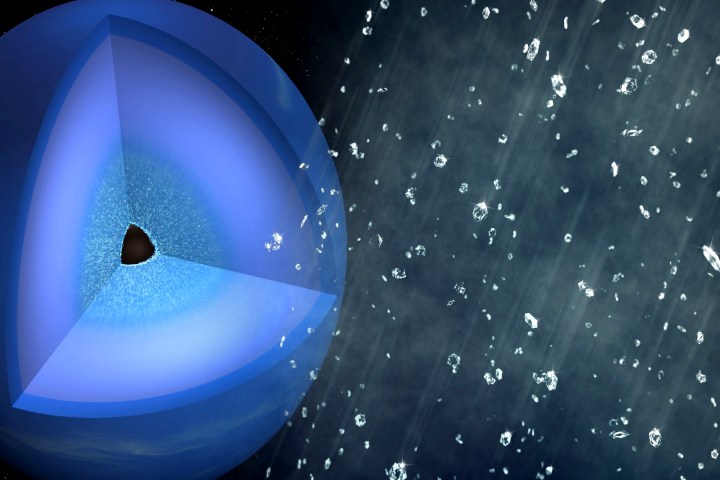
The laser rapidly heated up the surface of the plastic, which caused it to expand and generate a shock wave. The team prompted the creation of two shock waves, with the second being the faster of the two. When the shockwaves overlapped, it resulted in pressure and temperature of 150 GPa and 5,000 K being produced. These are similar to the conditions found around 10,000 km into the interior of Neptune and Uranus.
The results turned almost every carbon atom in the plastic material into a tiny diamond, just a few nanometers wide. While that is considerably smaller than the diamonds theorized to fall on the icy planets in question, this represents the first time the effect has been demonstrated. Using short pulses of X-rays, the team were actually able to watch the diamonds being formed.
“Our experiments were able to directly measure hydrocarbon separation and diamond formation at planetary interior conditions for the first time,” Dominik Kraus, a scientist at Helmholtz Zentrum Dresden-Rossendorf, told Digital Trends. “Besides the pretty cool [images] of diamond precipitation inside ice giants, this is important for various reasons.”
These reasons including a better understanding of planetary interiors, which is crucial to our understanding of the solar system, as well as — with more immediate practicality — a new way of potentially making diamonds.
“Making diamonds, in the case of our experiment ‘nanodiamonds,’ from simple hydrocarbons like plastics may have interesting applications since nanodiamonds have a steadily growing range of use in medicine, electronics, and material science,” Kraus continued. “This may be another example of how physics that was motivated by trying to understand objects in the sky can lead to useful applications on our planet. Currently, most nanodiamonds for scientific and industrial applications are produced with explosives. High-energy lasers may be able to provide a more elegant and controllable method.”
A research paper describing the project was published in the journal Nature Astronomy.
Editors' Recommendations
- Scientists discover X-rays coming from Uranus
- How did the planets Uranus and Neptune become so different?
- Scientists spot first alien gases from interstellar comet


